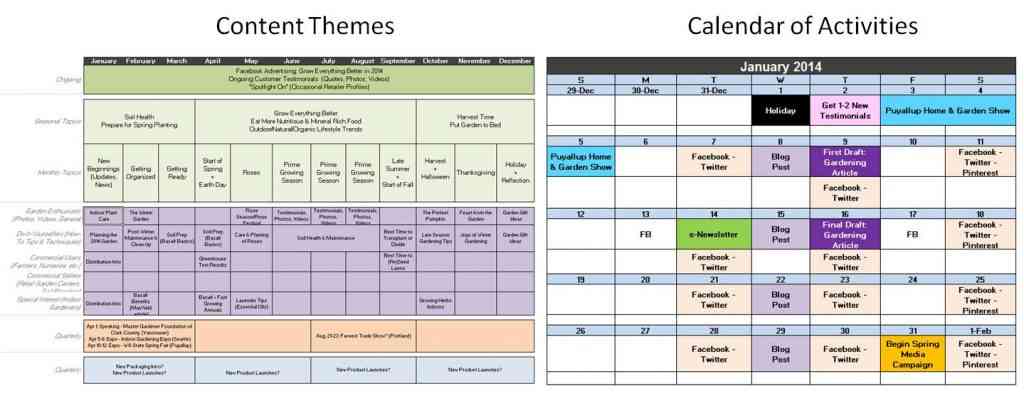When it comes to the development of optimized and strategic content, the old adage holds true:
“By failing to prepare, you are preparing to fail.” – Benjamin Franklin
Great content is the cornerstone of an effective online marketing strategy, yet too few companies spend the time to map out a plan that can be tracked and measured. If you have ever dashed off a quick blog entry or agonized over a social media post, you are not alone. Feeding the content machine is hard work. Without a concrete plan in place, it is easy to get derailed—or to draw a blank.
Don’t let the casual nature of social media fool you into thinking that it won’t eat up a lot of time. How hard is it to send out something clever and on-brand in 140 characters or less? Try doing it a few times a day—at the same time that you are trying to create and publish engaging content for other outlets. These might include a company e-newsletter, online blog, video channel, Facebook page, photo-sharing site or more.
To publish smart and strategic content consistently, you need a detailed six to twelve month plan. This means taking a step back to outline long-term brand and business goals and taking stock of how you will create and/or curate different forms of content to support those goals.
What should your content plan and calendar look like? Formats vary depending on need and there are templates that you can download online for free (Google “content plan template” or “content calendar template”). Below are two snapshots taken from a content plan that The Galvanizing Group developed on behalf of a brand of all-natural organic soil amendment used by organic farmers, home gardeners, nurseries, landscapers and more.
Specific elements of this particular content plan include:
High-level topics and themes: These are ongoing (i.e., year-round) and seasonal. Because levels of user engagement vary greatly depending on the growing season, the strategic allocation of content across the calendar year needs to be planned well in advance.
Target audiences and keywords: Garden enthusiasts (those that enjoy beautiful photography, for example) have different online habits than large-scale organic farmers and commercial sellers. Topics are broken down further using keywords to ensure that content is created to meet the specific needs of each audience segment.
Industry events and appearances: The dates and locations of industry events and appearances (garden seminars, product giveaways at retail nurseries, etc.) are tracked to ensure the creation of pre- and post-event promotional content.
Product news and updates: Plans for packaging updates and other product-related news are also noted to help guide the creation of content that updates customers and, more importantly, keeps distributors “in the know.”
Detailed monthly view: Specific and recurring activities (like weekly blog posts, bi-weekly Facebook posts, and monthly e-newsletters) are logged into a calendar. This is a simple yet effective way to provide structure and accountability for tasks that often get pushed to the back burner.
“You can’t plow a field simply by turning it over in your mind.” – Gordon B. Hinckley
Content planning takes work—but the return on investment is manifest in the form of easier decision-making. Should you post those cool pictures to Pinterest? Share your witty observations with the Twitterverse? If it doesn’t support or enhance the objectives that you’ve outlined in your content plan, move on to something that does. (Or risk getting trapped in a time-suck that is guaranteed to destroy your productivity for the rest of the day!)
More important, high-quality content is a no-brainer if you have any hope of cutting through the clutter and engaging with your target audience online. Today’s savvy consumers expect to interact with active sources of relevant information. In other words, they want to be educated and entertained. They want you to solve their problems and to provide them with content that is easy to access and that they can share with their friends.
That’s not something to leave to chance, is it?


